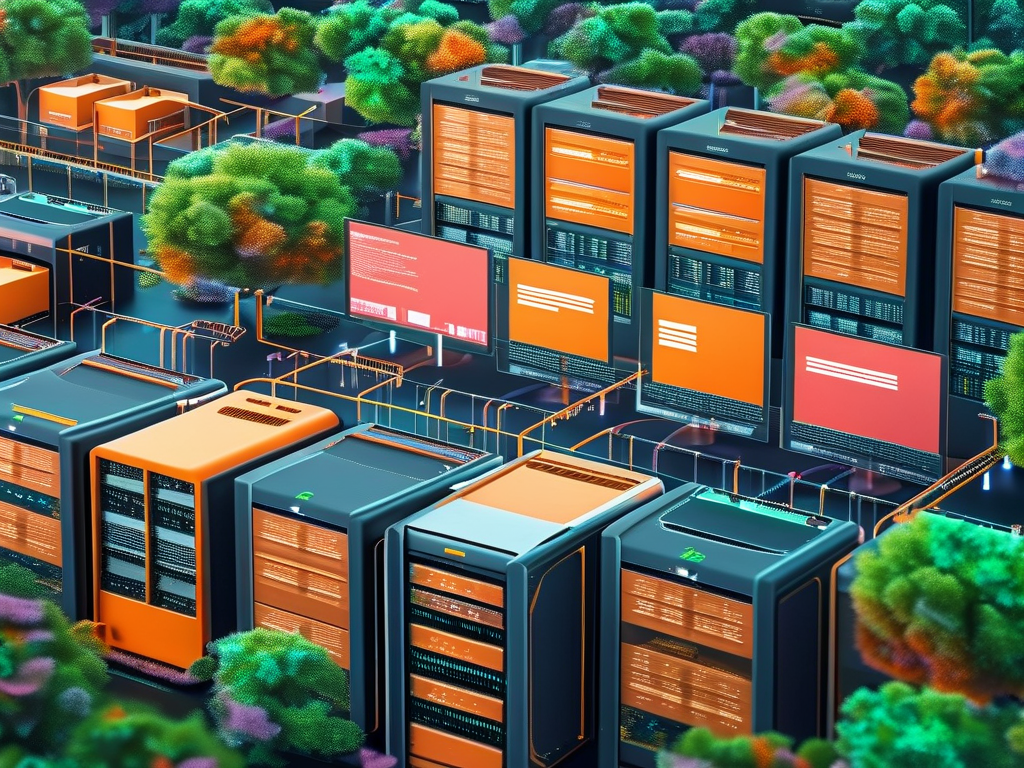In modern cloud-native ecosystems, Kubernetes (K8s) has emerged as the de facto orchestration platform for managing distributed systems. Its architecture embodies critical design patterns that address scalability, fault tolerance, and resource optimization. This article explores the foundational elements driving Kubernetes' effectiveness in distributed environments while emphasizing practical implementation strategies.

The Control Plane: Nervous System of K8s
At the heart of Kubernetes lies the control plane, a collection of components responsible for maintaining cluster state. The API Server acts as the gateway, processing REST operations and validating requests. For instance, a typical deployment request triggers the following workflow:
apiVersion: apps/v1
kind: Deployment
metadata:
name: nginx-cluster
spec:
replicas: 3
selector:
matchLabels:
app: nginx
template:
metadata:
labels:
app: nginx
spec:
containers:
- name: nginx
image: nginx:1.25
ports:
- containerPort: 80
When this manifest is applied, the API Server stores the desired state in etcd – Kubernetes' distributed key-value store. The Controller Manager then detects discrepancies between actual and desired states, initiating corrective actions through reconciliation loops.
Distributed Consensus with etcd
Etcd employs the Raft consensus algorithm to ensure data consistency across control plane nodes. This becomes crucial during leader election scenarios:
// Simplified Raft leader election logic
func (n *Node) startElection() {
n.currentTerm++
n.votedFor = n.id
sendVoteRequests(n.peers)
}
Such mechanisms prevent split-brain scenarios, ensuring only one master coordinates cluster operations at any given time. Production environments often deploy etcd clusters across availability zones, with odd node counts (3 or 5) to maintain quorum during network partitions.
Workload Scheduling Mechanics
The Kube-scheduler assigns pods to nodes based on resource requirements and constraints. A custom scheduling policy might prioritize GPU-enabled nodes for AI workloads:
def prioritize_gpu_nodes(pod, nodes):
prioritized = []
for node in nodes:
if node.resources.gpu >= pod.requirements.gpu:
prioritized.append((node, 100))
else:
prioritized.append((node, 0))
return sort(prioritized)
This declarative approach decouples intention from implementation, allowing operators to define what needs deployment rather than how to deploy it.
Networking in Distributed Pods
Kubernetes enforces flat network topology through CNI plugins, ensuring pods communicate across nodes without NAT. The Kube-proxy component maintains network rules using iptables or IPVS:
# IPVS-based service routing ipvsadm -Ln | grep -A2 "10.96.0.1:80" -> TCP 10.96.0.1:80 rr -> 192.168.1.2:80 Masq 1 0 0 -> 192.168.1.3:80 Masq 1 0 0
This load balancing occurs at Layer 4, complementing Ingress controllers that operate at Layer 7.
Failure Recovery Patterns
Self-healing mechanisms demonstrate Kubernetes' distributed design philosophy. When a node fails:
- Node controller marks the node as "NotReady"
- Endpoint controller removes pods from service endpoints
- Deployment controller spins up replacements on healthy nodes
This multi-controller collaboration ensures system resilience without single points of failure.
Scaling Strategies
Horizontal Pod Autoscaler (HPA) exemplifies reactive scaling:
kubectl autoscale deployment nginx-cluster --cpu-percent=50 --min=3 --max=10
Meanwhile, Vertical Pod Autoscaler (VPA) adjusts resource requests based on historical usage, requiring careful coordination with cluster autoscalers to prevent node overallocation.
Security in Distributed Context
Role-Based Access Control (RBAC) policies extend across namespaces, while network policies segment traffic:
kind: NetworkPolicy
apiVersion: networking.k8s.io/v1
metadata:
name: db-isolation
spec:
podSelector:
matchLabels:
role: database
ingress:
- from:
- podSelector:
matchLabels:
role: backend
Such granular controls prevent lateral movement in breach scenarios.
Observability Patterns
Distributed tracing tools like Jaeger integrate with sidecar containers to monitor cross-service interactions. A typical telemetry pipeline might aggregate metrics from:
- Kubelet (resource usage)
- Kube-state-metrics (object states)
- Custom application exporters
Evolutionary Challenges
While Kubernetes excels in stateless workload management, stateful services require additional coordination through StatefulSets and persistent volume claims. Operators must balance consistency guarantees with performance requirements when choosing storage backends.
In , Kubernetes' distributed architecture succeeds through deliberate abstraction layers and decentralized control mechanisms. By separating concerns between API management, scheduling, and resource control, it achieves scalability while maintaining operational simplicity. As organizations adopt hybrid cloud strategies, understanding these core principles becomes paramount for building resilient, self-regulating systems.




